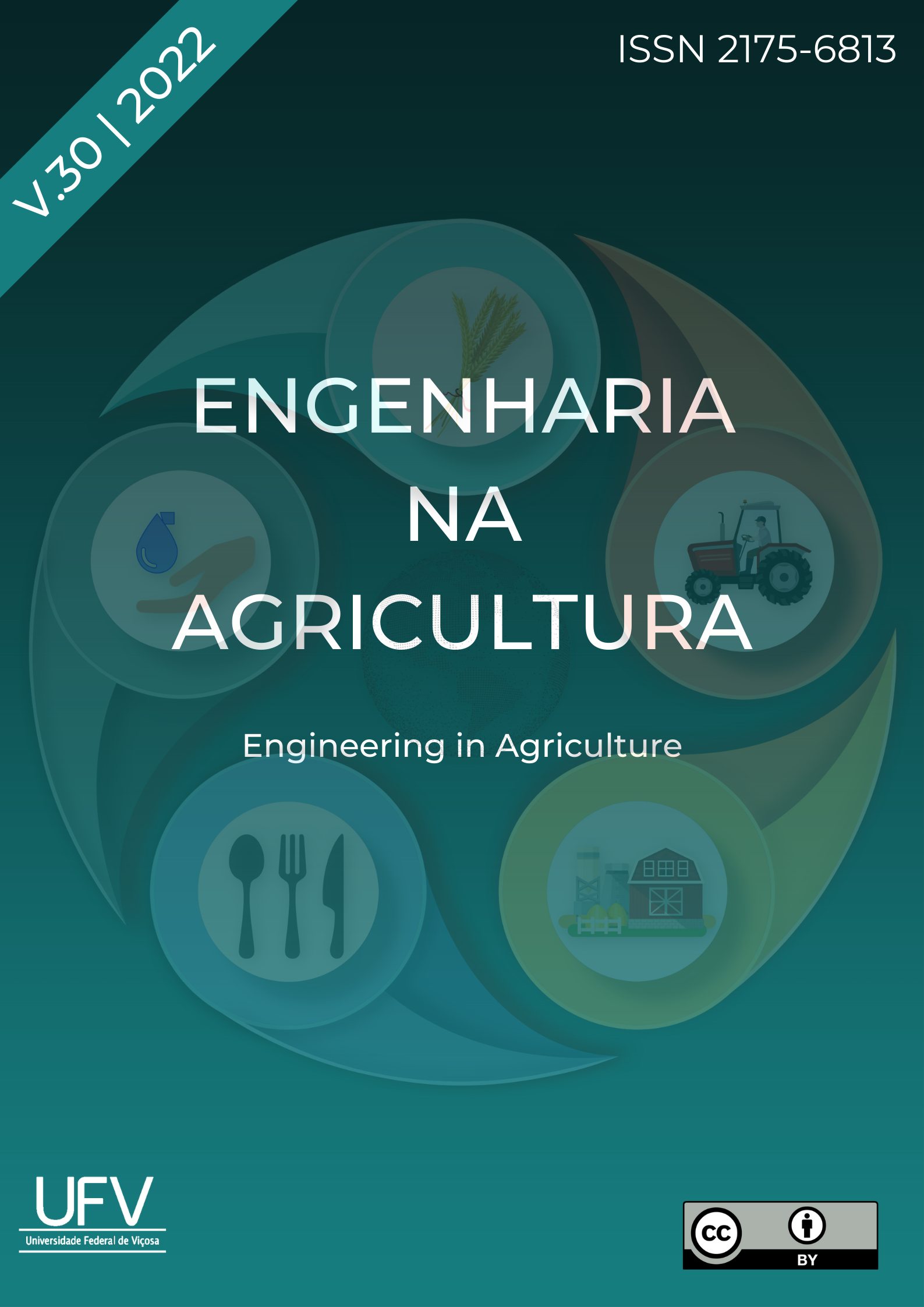Sugarcane wax extraction using hexane and limonene mixtures
DOI:
https://doi.org/10.13083/reveng.v30i1.13241Palavras-chave:
Sugarcane Wax, Agro-Industrial Waste, Solvent Mixture, Green Solvents, LimoneneResumo
Hexane is the most widely solvent used in the lipids extraction process, as the case of the sugarcane wax. However, the use of this solvent is highly harmful to the environment and to human health. Limonene is a monoterpene found in the citrus peel, with great potential for use as a green solvent. In this study, the partial and total substitution of hexane by limonene was performed in the process of the sugarcane peel wax extraction to evaluate the effect of this substitution on the physicochemical characteristics of the wax. The extracted samples were compared with a commercial wax sample (carnauba) using the Thermogravimetric Analysis (TGA), Differential Scanning Calorimetry (DSC) and Infrared by Fourier Transform (FTIR) analyses. Through this study, we can conclude that the waxes obtained from the use of the hexane and limonene mixture solvents presented similar physicochemical characteristics to those found in commercial waxes. Thus, the total and/or partial substitution of the hexane by solvents less harmful to health and the environment, such as limonene, can be an alternative in the wax extraction process.
Downloads
Referências
ALBUQUERQUE, M. L. S.; GUEDES, I.; ALCANTARA Jr. P.; MOREIRA S. G. C. Infrared absorption spectra of Buriti (Mauritia flexuosa L.) oil. Vibrational Spectroscopy, Amsterdam, v. 33, p. 127-131, 2003.
ASIKIN, Y.; TAKAHASHI, M.; HIROSE, N.; HOU, D.; TAKARA, K.; WADA, K. Wax, policosanol, and long-chain aldehydes of different sugarcane (Saccharum officinarum L.) cultivars. European Journal of Lipid Science and Technology, Weinheim, v. 114, p. 583-591, 2012.
ATHUKORALA, Y.; MAZZA, G.; DAVE, O. B. Extraction, Purification and Characterization of Wax from Flax (Linum Usitatissimum) Straw. European Journal of Lipid Science and Technology, Weinheim, v. 111, p. 705-714, 2009.
AZZAM, A. M. Separation and analysis of wax from Egyptian sugar cane filter press cake. Fette Seifen Anstrichmittel, Hamburg, v. 86, n. 6, p. 247-250, 1984.
AZZAM, A. M. Further investigations on cane wax refining and bleaching. Fette Seifen Anstrichmittel, Hamburg, v. 88, n. 5, p. 191-194, 1986.
BALCH, R. T. The lipids of sugarcane. In: Honig, P. Principles de Sugar Technology. New York: Elsevier Publishing Company, 1953.
BLIGH, E. G.; DYER, W. J. A Rapid Method of Total Lipid Extraction and Purification. Canadian Journal of Biochemistry and Physiology, Ottawa, v. 37, p. 911-917, 1959.
CASCANT, M. M.; BREIL, C.; GARRIGUES, S.; de la GUARDIA, M.; FABIANO-TIXIER, A. S.; CHEMAT, F. A green analytical chemistry approach for lipid extraction: computation methods in the selection of green solvents as alternative to hexane. Analytical and Bioanalytical Chemistry, Berlin, v. 409, p. 3527–3539, 2017.
GEORGES, S. P.; SYLVETRE, M.; RUEGGER, H.; BOURGEOIS, P. Ketosteroids and hydroxyketosteroid minor metabolites of sugar cane wax. Steroids, New York, v. 71, p. 647-652, 2006.
GARCÍA, A. G.; RODRÍGUEZ, G. B.; TÍO, M. V. Cera refinada de torta. In: Manual dos derivados de cana-de-açúcar (ICIDCA). Brasília: ABIPTI, 1999.
GUILLÉN, M. D.; CABO N. Infrared spectroscopy in the study of edible oils and fats. Journal of the Science of Food and Agriculture, New York, v. 75, p. 1–11, 1997.
GUNAWAN, S.; VALI, S. R.; JU, Y-H. Purification and Identification of Rice Bran Oil Fatty Acid Steryl and Wax Esters. Journal of the American Oil Chemists Society, Champaign, v. 83, n. 5, 2006.
INARKAR, M. B.; LELE, S. S. Extraction and Characterization of Sugarcane Peel Wax. International Scholarly Research Notices (ISRN): Agronomy, New York, v. 2012, p. 1-6, 2012.
KNUUTINEN, U.; NORRMAN, A. Wax analysis in conservation objects by solubility studies, FTIR and DSC. 15th World Conference on Nondestructive Testing, Rome (Italy), 2000.
MAMIDIPALLY, P. K.; LIU, S. X. First Approach on Rice Bran Oil Extraction using Limonene. European Journal of Lipid Science and Technology, Weinheim, v. 106, p.122-125, 2004.
OLIVEIRA, R. M. A. Terpenes evaluation for sugarcane wax extraction. Masters dissertation. University of Campinas (UNICAMP), Campinas, 2018.
PATURAU, J. M. By-products of the Cane Sugar Industry. New York: Elsevier Publishing Company, 1989.
PHUKAN, A. C.; BORUAH, R. K. Extraction and evaluation of microcrystalline wax from press mud waste of the sugar industry. Separation and Purification Technology, Amsterdam, v. 17, p. 189-194, 1999.
QI, G.; PENG, F.; XIONG, L.; LIN, X.; HUANG, C.; LI, H.; CHEN, X. Extraction and Characterization of Wax from Sugarcane Bagasse and the Enzymatic Hydrolysis of Dewaxed Sugarcane Bagasse. Preparative Biochemistry & Biotechnology, Philadelphia, v. 47, p. 276–281, 2017.
VIROT, M.; TOMAO, V.; GINIES, C.; CHEMAT, F. Total Lipid Extraction of Food Using d-Limonene as an Alternative to n-Hexane. Chromatographia, Wiesbaden, v. 68, p. 311-313, 2008.
VIEIRA, T. M. F. S. Wax attainment of sugar cane from by-product of the sugar-alcohol industry: extraction, purification and characterization. Doctoral Thesis. University of Campinas (UNICAMP), Campinas, 2003.
Downloads
Publicado
Como Citar
Edição
Seção
Licença
Copyright (c) 2022 Revista Engenharia na Agricultura - REVENG

Este trabalho está licenciado sob uma licença Creative Commons Attribution-NonCommercial 4.0 International License.
Autores que publicam nesta revista concordam com os seguintes termos:
O(s) autor(es) autoriza(m) a publicação do texto na da revista;
O(s) autor(es) garantem que a contribuição é original e inédita e que não está em processo de avaliação em outra(s) revista(s);
A revista não se responsabiliza pelas opiniões, ideias e conceitos emitidos nos textos, por serem de inteira responsabilidade de seu(s) autor(es);
É reservado aos editores o direito de proceder a ajustes textuais e de adequação às normas da publicação.
A partir da submissão, o autor estará cedendo integralmente seus direitos patrimoniais da obra à publicação, permanecendo detentor de seus direitos morais (autoria e identificação na obra) e de acordo com a Licença Creative Commons, CC BY-NC.








 Esta obra está licenciada com uma Licença
Esta obra está licenciada com uma Licença 